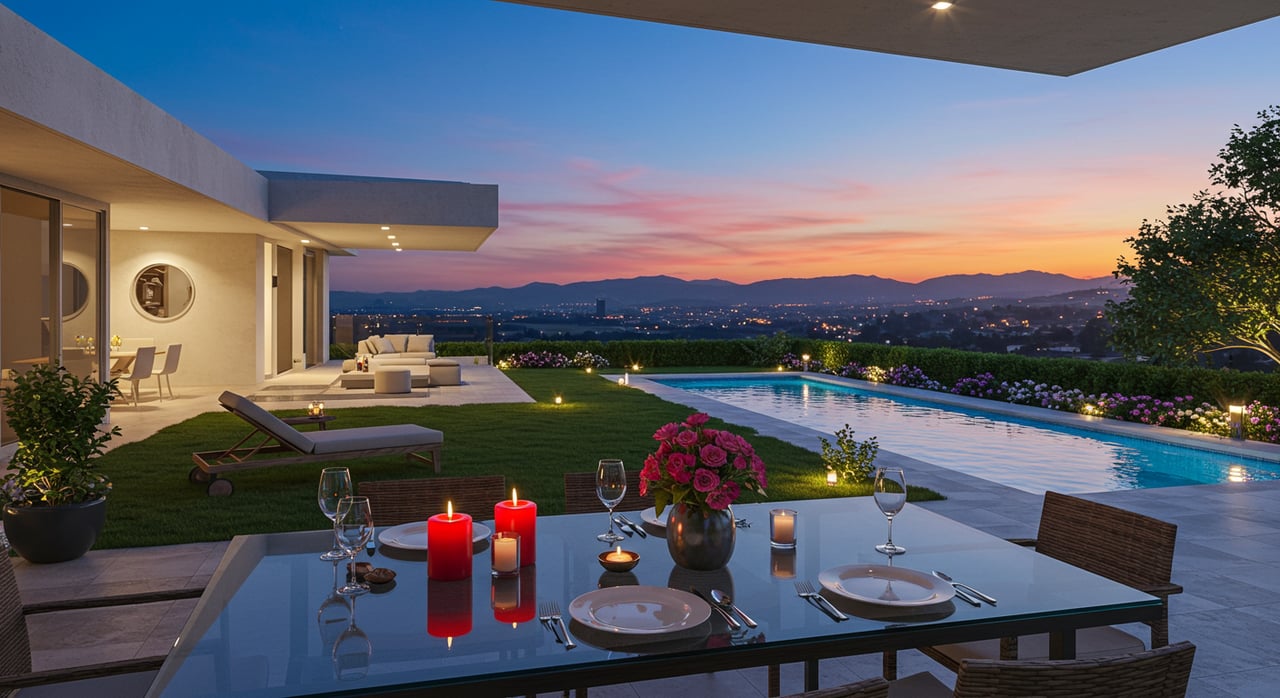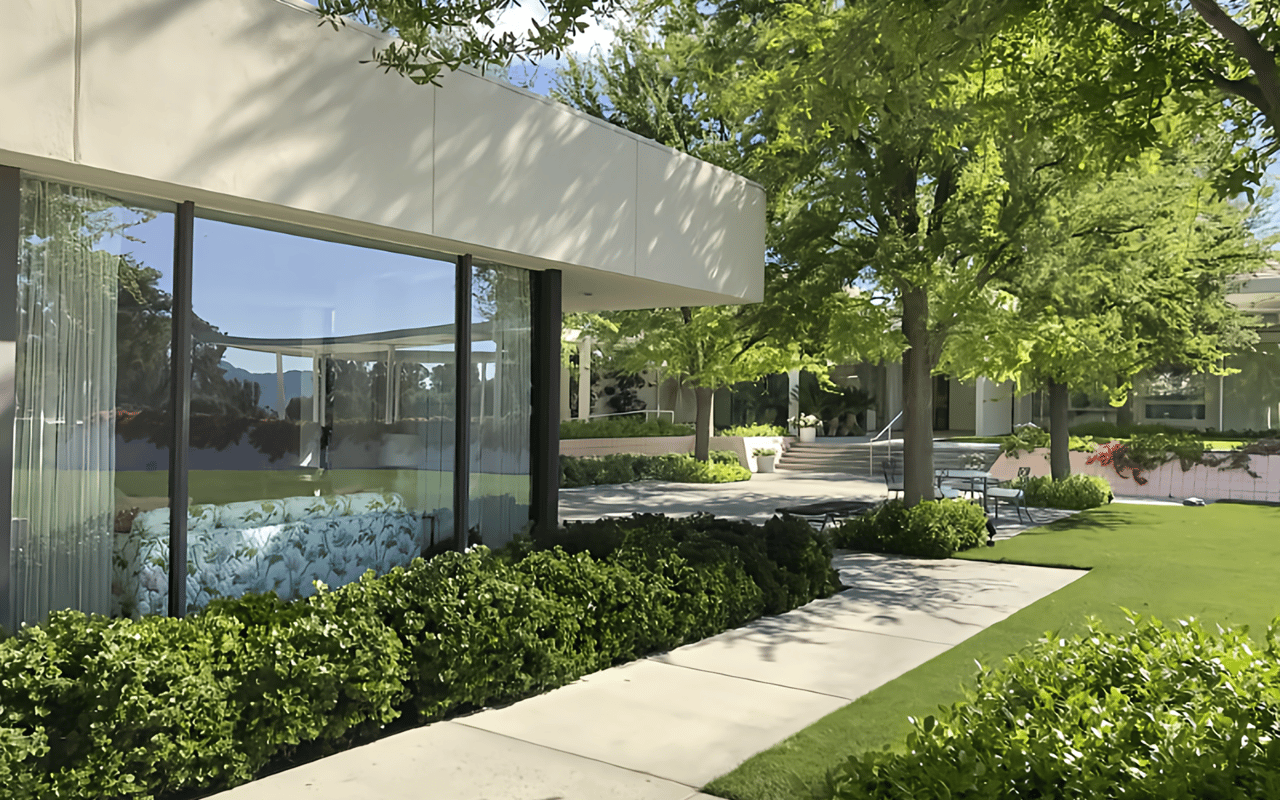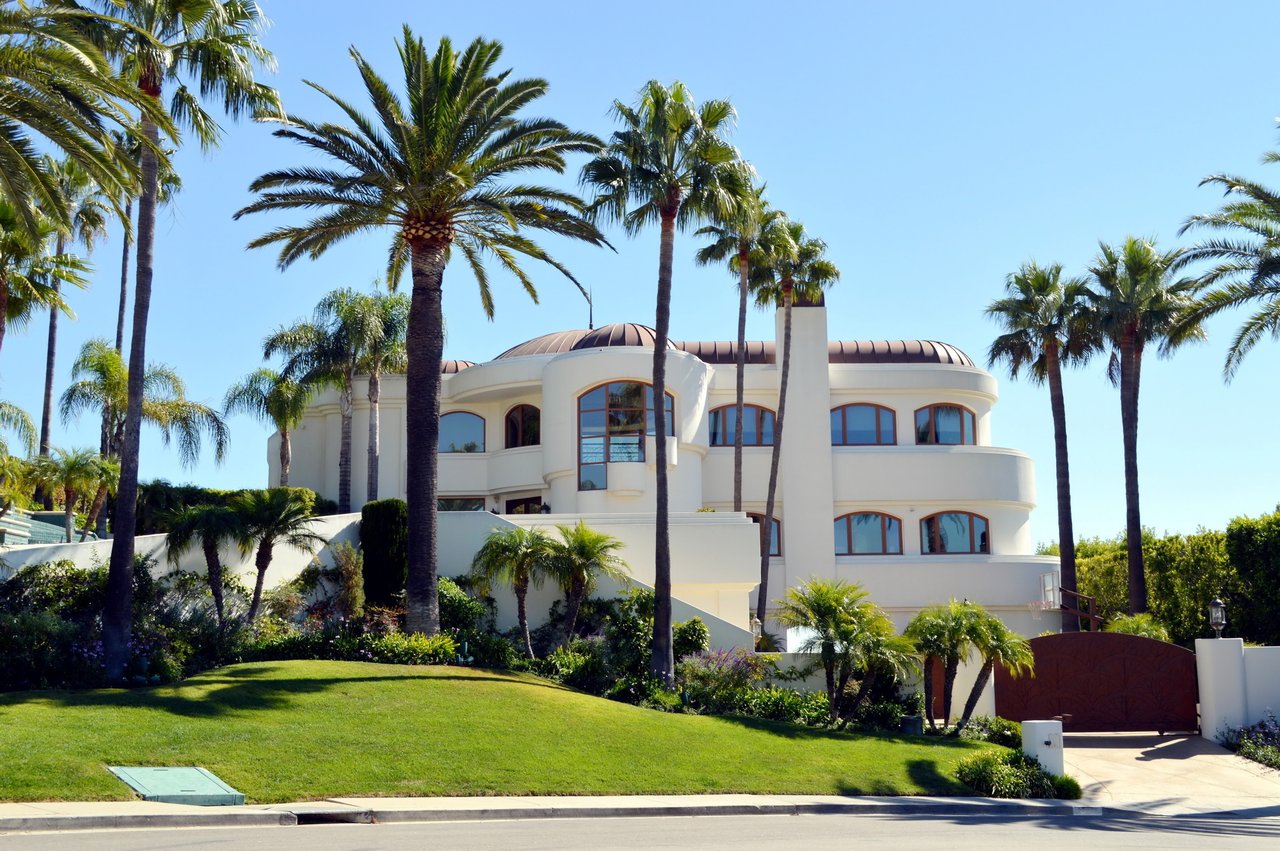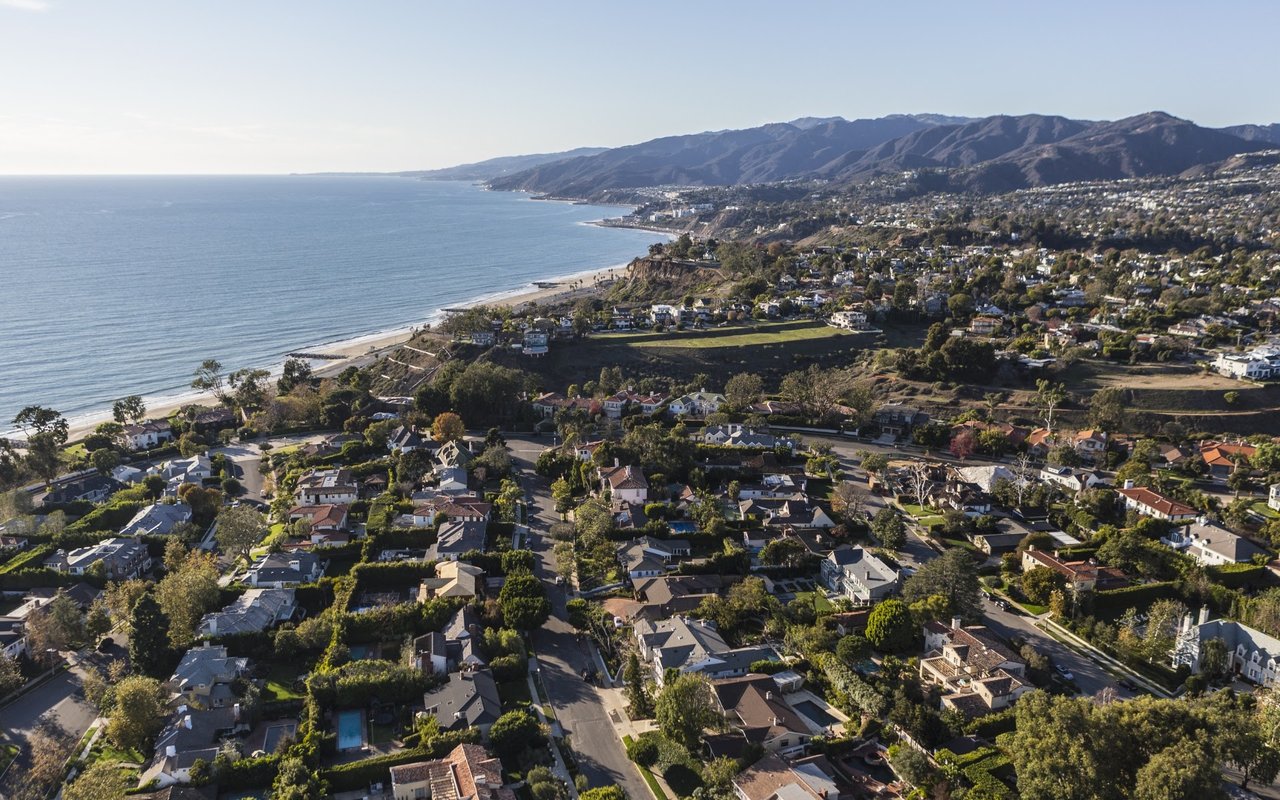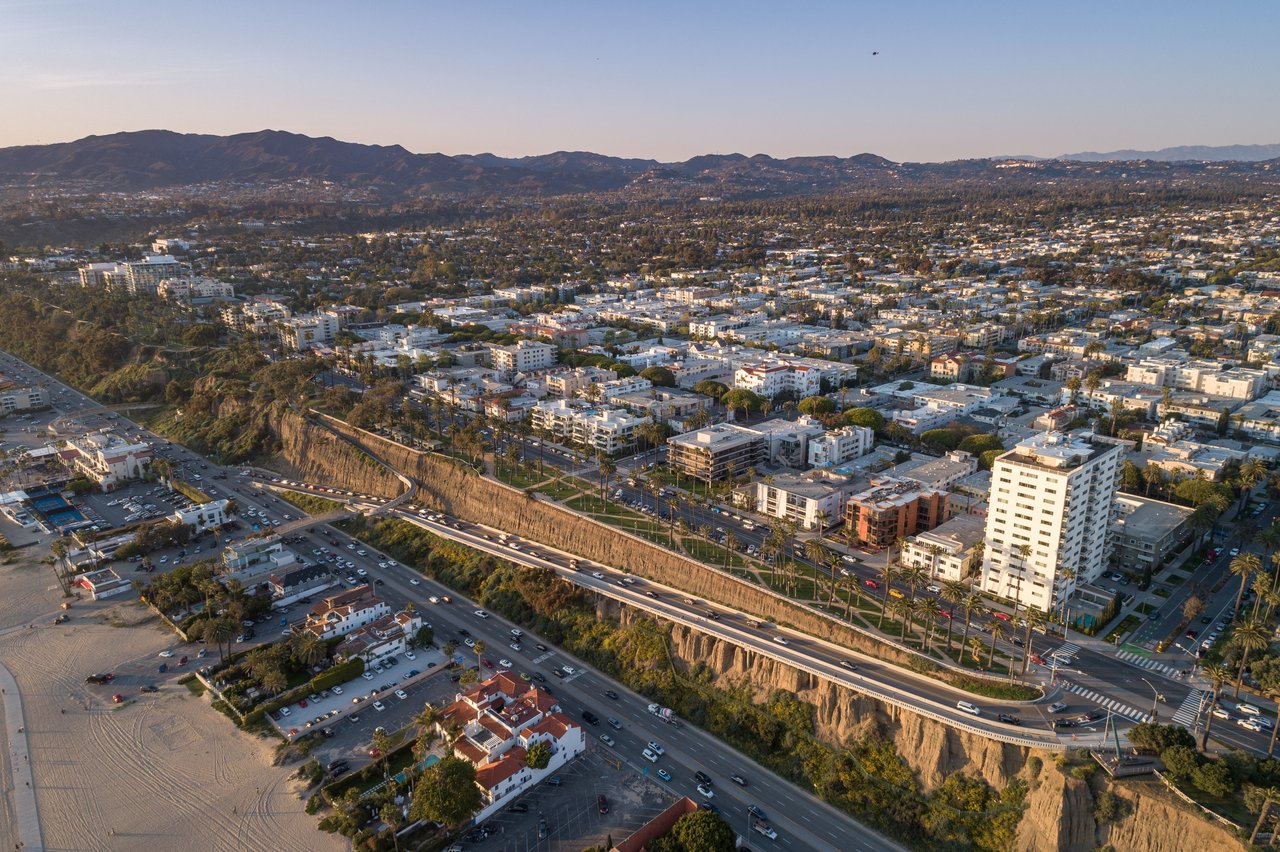Welcome to Riviera in Pacific Palisades, CA, one of the premier destinations for celebrities looking for privacy and luxury. Riviera offers homes that are masterpieces designed by the hands of renowned architects.
Each estate in Riviera has exquisite architectural details and superb craftsmanship. Imagine waking up every day to breathtaking views of the Pacific, surrounded by homes that are each a unique piece of art. The neighborhood thrives amid its extravagant and secluded settings, boasting estates that could easily grace the pages of any luxury lifestyle magazine. Here's a brief overview of a few famous architects who left their mark on Riviera's architectural landscape.
Richard Neutra: A pioneer of the international style in American architecture
Richard Neutra, an Austrian-born American architect, was pivotal in introducing the International Style to American shores. His career in architecture took a significant leap forward when he won an award in 1923 for his visionary city-planning project in Haifa, which was then part of Palestine. This early recognition set the stage for a prolific career that would see him design over 300 homes, not just in California but across various landscapes.
Neutra's architectural ethos was deeply rooted in modernist styles, where harmony with natural surroundings was paramount. His designs prominently featured extensive use of glass and steel, emphasizing clean lines that merge seamlessly with their environments. His homes are more than mere structures; they are experiential spaces designed to bring the outside in, creating a sense of openness and continuity between the dwelling and the landscape.
Among his most celebrated works are the Lovell House in Los Angeles and the Kaufmann Desert House in Palm Springs. These homes are epitomes of the International Style, distinguished by their glass expanses, cable-suspended balconies, and meticulous placement within their respective landscapes. Neutra's design philosophy extended beyond aesthetics; he believed architecture was a tool to reconnect humans with nature and themselves, ensuring his structures not only resonated with the landscapes but also reflected the lifestyles of their inhabitants.
Neutra's architectural ethos was deeply rooted in modernist styles, where harmony with natural surroundings was paramount. His designs prominently featured extensive use of glass and steel, emphasizing clean lines that merge seamlessly with their environments. His homes are more than mere structures; they are experiential spaces designed to bring the outside in, creating a sense of openness and continuity between the dwelling and the landscape.
Among his most celebrated works are the Lovell House in Los Angeles and the Kaufmann Desert House in Palm Springs. These homes are epitomes of the International Style, distinguished by their glass expanses, cable-suspended balconies, and meticulous placement within their respective landscapes. Neutra's design philosophy extended beyond aesthetics; he believed architecture was a tool to reconnect humans with nature and themselves, ensuring his structures not only resonated with the landscapes but also reflected the lifestyles of their inhabitants.
Frank Lloyd Wright: Synthesizing structure with nature
Frank Lloyd Wright, an architect whose name is synonymous with organic architecture, designed over 1,000 structures throughout his career. His architectural philosophy emphasized creating buildings that were in harmony with humanity and their environment—a concept he termed "organic architecture." This philosophy guided his approach to melding interior spaces with the outdoors, ensuring a fluid transition that extended the living space into the natural surroundings.
One of Wright's most famous contributions to California's architectural scene is the Hollyhock House in Los Angeles, completed in 1917. Inspired by Mayan Revival styles, the Hollyhock House has been designated a National Historic Landmark. It remains a significant piece of architectural history open to the public for tours. This structure exemplifies Wright's skill in integrating his work with the surrounding environment, making it a classic example of a building that not only occupies but also enhances its landscape.
One of Wright's most famous contributions to California's architectural scene is the Hollyhock House in Los Angeles, completed in 1917. Inspired by Mayan Revival styles, the Hollyhock House has been designated a National Historic Landmark. It remains a significant piece of architectural history open to the public for tours. This structure exemplifies Wright's skill in integrating his work with the surrounding environment, making it a classic example of a building that not only occupies but also enhances its landscape.
Ray Kappe: Harmonizing design with environment
Ray Kappe was a prominent architect known for his influential designs with post-and-beam construction and extensive use of glass. He created homes that accentuated their natural surroundings. His architectural style is distinguished by a profound integration with the landscape, making each structure feel like an organic part of the terrain.
A quintessential example of Kappe's architectural philosophy is the Kappe Residence, nestled in the Riviera section of Pacific Palisades. This iconic home, constructed on a heavily treed hillside, epitomizes modern design that respects and utilizes challenging topographies. The residence is renowned for being a pioneering model for houses built on complex sites, skillfully raised on decks to navigate around the natural underground springs prevalent in the area.
The Kappe Residence's design features include using natural building materials that complement the wooded environment, strong geometric forms that create a dynamic interplay with the natural light, and supersaturated colors that add vibrancy against the earthy backdrop.
A quintessential example of Kappe's architectural philosophy is the Kappe Residence, nestled in the Riviera section of Pacific Palisades. This iconic home, constructed on a heavily treed hillside, epitomizes modern design that respects and utilizes challenging topographies. The residence is renowned for being a pioneering model for houses built on complex sites, skillfully raised on decks to navigate around the natural underground springs prevalent in the area.
The Kappe Residence's design features include using natural building materials that complement the wooded environment, strong geometric forms that create a dynamic interplay with the natural light, and supersaturated colors that add vibrancy against the earthy backdrop.
In 1996, the Kappe Residence was listed as a City of Los Angeles Historic-Cultural Monument, underscoring its significance in the city's architectural landscape. This home not only stands as a testament to Kappe's innovative approach to design but also remains one of the top ten houses in Los Angeles, as selected by an expert panel. The residence illustrates how architecture can transcend mere construction to become a harmonious extension of the natural world.
Cliff May: Master of the California ranch style
Cliff May's legacy in architectural design is most prominently embodied in the California Ranch style, which he helped popularize. Known for their open floor plans and seamless integration with the outdoors, May's designs emphasize an expansive and intimately connected lifestyle. His homes, characterized by broad, flowing spaces that open directly onto gardens and natural vistas, are quintessential examples of this style.
One of the notable homes May designed in Pacific Palisades reflects the pinnacle of his architectural ethos. The last time this property was listed for sale, it was on the market for $21,495,000, a testament to its exquisite design and prime location. The estate is on two-thirds of an acre, a lush oasis featuring mature olive trees that greet visitors beyond the wooden gates. It includes horse stables, secret gardens, and rolling lawns, all centered around a spacious courtyard with a pool and cabana.
The home is a marvel of design, with soaring ceilings, steel doors, and windows that enhance the open feel while ensuring durability. The use of wood and stone throughout lends the house a cottage-like warmth despite its grand scale. All rooms are designed to flow outward to the gardens, reinforcing May's philosophy of indoor-outdoor living.
One of the notable homes May designed in Pacific Palisades reflects the pinnacle of his architectural ethos. The last time this property was listed for sale, it was on the market for $21,495,000, a testament to its exquisite design and prime location. The estate is on two-thirds of an acre, a lush oasis featuring mature olive trees that greet visitors beyond the wooden gates. It includes horse stables, secret gardens, and rolling lawns, all centered around a spacious courtyard with a pool and cabana.
The home is a marvel of design, with soaring ceilings, steel doors, and windows that enhance the open feel while ensuring durability. The use of wood and stone throughout lends the house a cottage-like warmth despite its grand scale. All rooms are designed to flow outward to the gardens, reinforcing May's philosophy of indoor-outdoor living.
John Lautner: Envisioning the future of architecture
John Lautner, a visionary disciple of Frank Lloyd Wright, left an indelible mark on modern architecture with his futuristic and innovative designs. Over his career, he designed more than 200 projects, many showcasing his ability to blend dramatic views, bold geometric shapes, and natural materials into structures that appeared ahead of their time.
Lautner was particularly noted for his development of the Googie style, a type of futurist architecture inspired by elements of car culture, jets, the Atomic Age, and the Space Age, particularly prominent in the late 1950s and early 1960s. His engineering prowess allowed him to juxtapose different angles and shapes, creating forms that were at once strikingly modern and harmoniously integrated with their surroundings. He pioneered using concrete as a building material and a sculptural element in his designs.
Among his iconic designs are the 1960 Malin residence, commonly known as the Chemosphere, located in the Hollywood Hills, and the 1963 Reiner residence, Silvertop, in Silver Lake. These homes feature innovative elements like wooden ceilings that open to reveal a descending television and glass sinks operated by motion sensors instead of traditional faucets, emphasizing Lautner's commitment to combining form, function, and futuristic elegance. Lautner's contributions to architecture are evident in his ability to challenge conventional forms and integrate advanced technology, making his work functional and artistically compelling.
Lautner was particularly noted for his development of the Googie style, a type of futurist architecture inspired by elements of car culture, jets, the Atomic Age, and the Space Age, particularly prominent in the late 1950s and early 1960s. His engineering prowess allowed him to juxtapose different angles and shapes, creating forms that were at once strikingly modern and harmoniously integrated with their surroundings. He pioneered using concrete as a building material and a sculptural element in his designs.
Among his iconic designs are the 1960 Malin residence, commonly known as the Chemosphere, located in the Hollywood Hills, and the 1963 Reiner residence, Silvertop, in Silver Lake. These homes feature innovative elements like wooden ceilings that open to reveal a descending television and glass sinks operated by motion sensors instead of traditional faucets, emphasizing Lautner's commitment to combining form, function, and futuristic elegance. Lautner's contributions to architecture are evident in his ability to challenge conventional forms and integrate advanced technology, making his work functional and artistically compelling.
Paul R. Williams: Architect of Hollywood glamour
Paul R. Williams was known as the architect of the stars. He crafted over 2,000 residences, many for high-profile figures like Frank Sinatra and Lucille Ball, along with iconic projects like the Beverly Hills Hotel. His signature Hollywood Regency style is recognized for its luxurious materials and meticulous detailing, catering to a clientele that appreciated refined aesthetics.
Williams was an early pioneer in interior design, revolutionizing how spaces were organized and perceived. He skillfully opened floor plans and utilized windows and mirrors to amplify natural and reflected light, transforming interiors into bright, inviting environments. His approach often involved substituting modern building materials for traditional ones, such as using boards instead of stucco for exteriors and replacing ornately carved wood interiors with stone and smooth finishes.
Among his notable works in Pacific Palisades is the Tevis Morrow Residence, which embodies Williams' flair for integrating luxury with livability. His designs in Riviera continue to influence the real estate market, attracting buyers who seek homes that combine star-studded history with timeless elegance.
Williams was an early pioneer in interior design, revolutionizing how spaces were organized and perceived. He skillfully opened floor plans and utilized windows and mirrors to amplify natural and reflected light, transforming interiors into bright, inviting environments. His approach often involved substituting modern building materials for traditional ones, such as using boards instead of stucco for exteriors and replacing ornately carved wood interiors with stone and smooth finishes.
Among his notable works in Pacific Palisades is the Tevis Morrow Residence, which embodies Williams' flair for integrating luxury with livability. His designs in Riviera continue to influence the real estate market, attracting buyers who seek homes that combine star-studded history with timeless elegance.
Your guide to Riviera's finest
Navigating the competitive landscape of Riviera, CA, real estate requires a seasoned expert who understands the market and advocates for your best interests. Claire O'Conner of O'Connor Estates has industry expertise and provides personalized care. With years of experience connecting clients to their dream homes, O'Connor Estates excels in one of California's most competitive markets.
